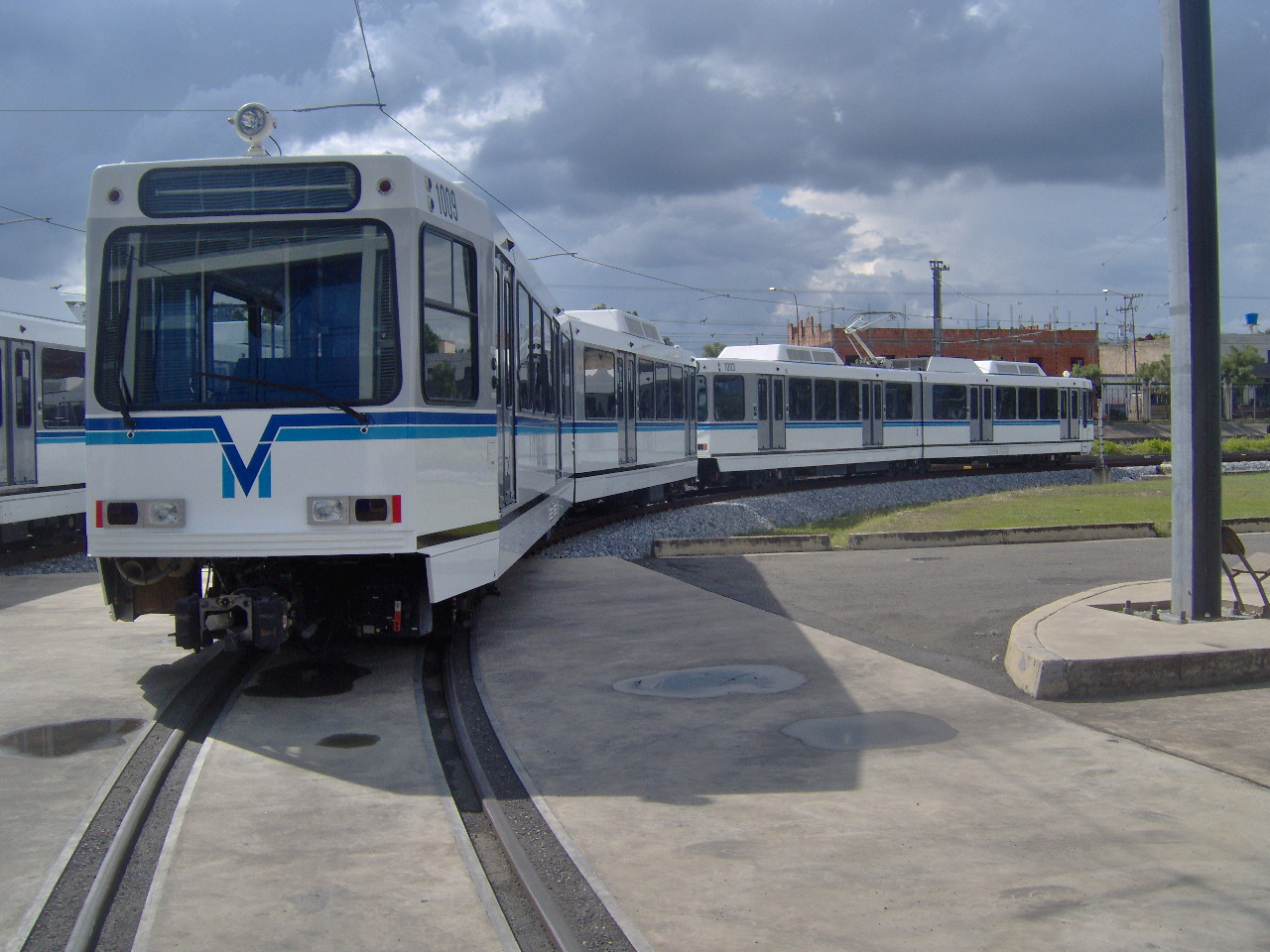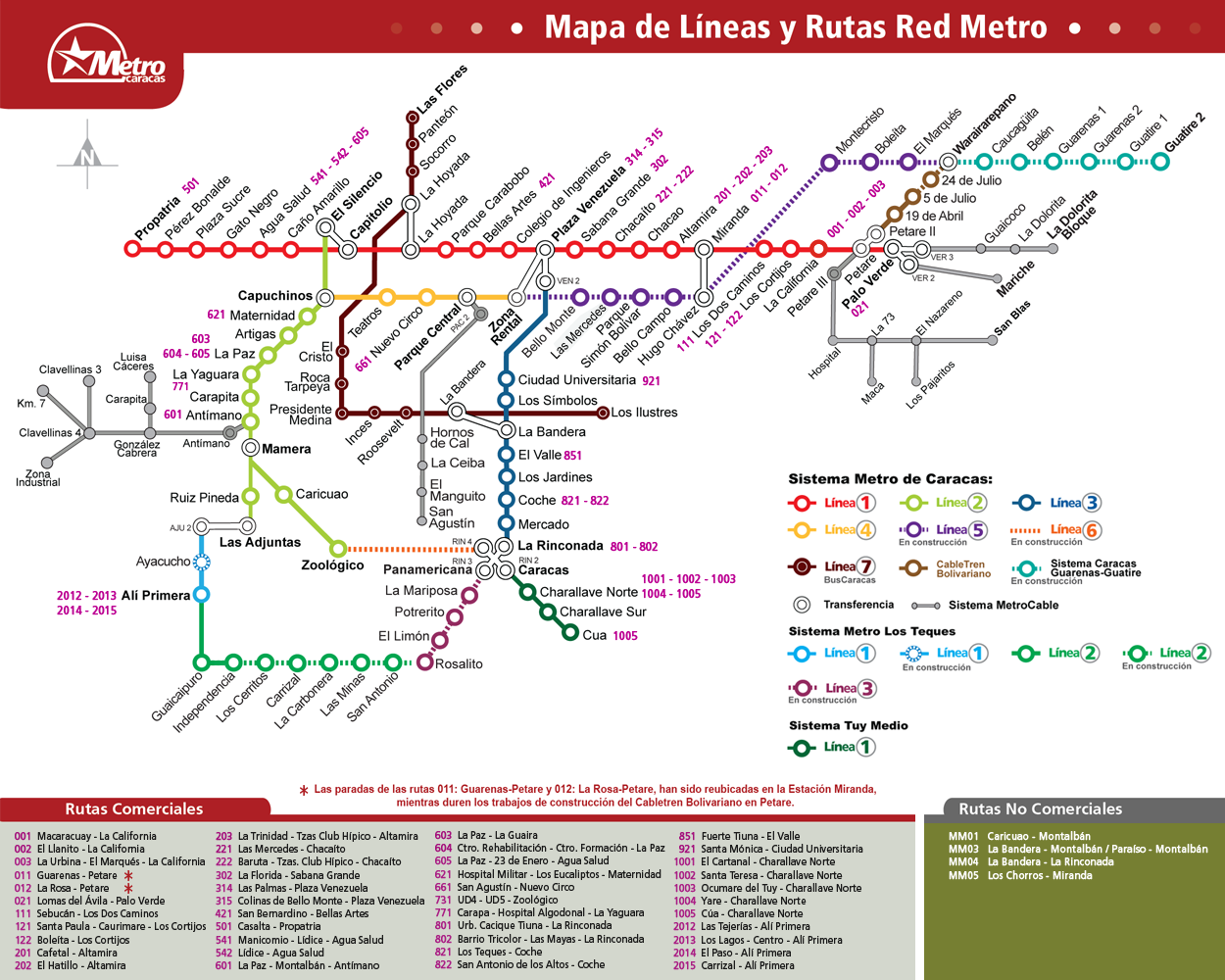|
Maracaibo Metro
The Maracaibo Metro, also known as ''Metro del Sol Amado'', is a six-station light rail system in Maracaibo, Venezuela. Service between La Vanega and El Varillal (skipping Urdaneta) opened to the public on 25 November 2006, with the last station on the line opened on 9 June 2009. The line encompasses the suburbs of Maracaibo and Maracaibo itself as drop-off point. Also one station is a transfer point between rail services provided by IAFE. There are a total of six stations along the line – two elevated stations (Urdaneta and Libertador), and four at-grade stations. The line was built by the city government of Maracaibo and the Venezuelan national government. In March 2009 it was reported that corruption allegations regarding the 1998 signing of the construction contract with Siemens were being investigated. Lines Line 1 The first stage of line 1 will be long. The totally planned system of four lines shall have in the future. German company Siemens is supplyi ... [...More Info...] [...Related Items...] OR: [Wikipedia] [Google] [Baidu] |
Maracaibo
Maracaibo ( , ; ) is a city and municipality in northwestern Venezuela, on the western shore of the strait that connects Lake Maracaibo to the Gulf of Venezuela. It is the largest city in Venezuela and is List of cities in Venezuela by population, the second-largest city proper in Venezuela, after the national capital, Caracas, and the capital of the state of Zulia. The population of the city is approximately 2,658,355 with the metropolitan area estimated at 5,278,448 . [...More Info...] [...Related Items...] OR: [Wikipedia] [Google] [Baidu] |
Metro M1 (Prague)
Metro M1 is a Czech type of metro train, which is used on line C of the Prague Metro. These Metro trains were made by the companies ČKD, Siemens and ADTranz mainly from 2000 to 2003 and were developed especially for Prague. These metro trains replaced the metro 81-71M. Description The Metro M1 train consists of five units. Because of differences in the technical equipment of each car, the train is indivisible. It is driven by asynchronous motors with microprocessor control, in contrast to the motors used in Soviet trains. The train has a central control system that allows the train crew, data collection and evaluation, including diagnostics. Maximum capacity of one car is 48 seats (40 for the first and last car) for sitting and 252 standing places (242 for the first and last car). The metro runs automatically, the driver only ensures the door opening and closing and reporting of stations. The metro is checked from the central dispatching of the Prague metro. The maximum s ... [...More Info...] [...Related Items...] OR: [Wikipedia] [Google] [Baidu] |
Rapid Transit In Venezuela
Rapid(s) or RAPID may refer to: Hydrological features * Rapids, sections of a river with turbulent water flow * Rapid Creek (Iowa River tributary), Iowa, United States * Rapid Creek (South Dakota), United States, namesake of Rapid City Sports teams * SK Rapid Wien, an Austrian club * FC Rapid Ghidighici, a Moldovan club * SK Rapid, a Norwegian club * FC Rapid București, a Romanian club * FK Rapid Bratislava, a Slovak club * SV Rapid Marburg, a Yugoslav former club that today would be Slovene * Colorado Rapids, an American team Transportation * ''Rapid'' (brig), the ship that brought William Light's surveying party to South Australia in 1836 * The Rapid, popular name of RTA Rapid Transit, the rail transit service of Cleveland and surrounding Cuyahoga County, Ohio * The Rapid, a bus system in the Greater Grand Rapids, Michigan area * Rapid (San Diego), a BRT system serving the Greater San Diego region in California * Rapid Rail, a rapid transit operator in Malaysia ... [...More Info...] [...Related Items...] OR: [Wikipedia] [Google] [Baidu] |
List Of Rapid Transit Systems
These lists of urban rail transit systems are sorted by the type of system: * List of tram and light rail transit systems * List of town tramway systems * Medium-capacity rail system * List of premetro systems * List of metro systems * List of monorail systems * List of suburban and commuter rail systems * List of funicular railways * List of urban rail systems in Japan See also * List of bus rapid transit systems The term ''bus rapid transit system'' (''BRT system'') has been applied to a wide range of bus, trolleybus, and electric bus systems. In 2012, the Institute for Transportation and Development Policy (ITDP) published a BRT Standard to make it ea ... * List of trolleybus systems * List of airport people mover systems {{DEFAULTSORT:Rapid transit systems * Transport lists ... [...More Info...] [...Related Items...] OR: [Wikipedia] [Google] [Baidu] |
Medium-capacity Rail Transport System
A medium-capacity system (MCS), also known as light rapid transit or light metro, is a rail transport system with a capacity greater than light rail, but less than typical heavy-rail rapid transit. MCS trains are usually 1 to 4 cars. Most medium-capacity rail systems are automated or use light-rail type vehicles. Since ridership determines the scale of a rapid transit system, statistical modeling allows planners to size the rail system for the needs of the area. When the predicted ridership falls between the service requirements of a light rail and heavy-rail rapid transit or metro system, an MCS project is indicated. An MCS may also result when a rapid transit service fails to achieve the requisite ridership due to network inadequacies (e.g. single-tracking) or changing demographics. In contrast with light rail systems, an MCS or light metro runs on an entirely grade separated exclusive right-of-way, and is therefore completely separated from other traffic. In some cases, ... [...More Info...] [...Related Items...] OR: [Wikipedia] [Google] [Baidu] |
List Of Latin American Rail Transit Systems By Ridership
The following is a list of all urban rail transit systems in Latin America, ranked by passenger ridership. These kinds of systems are most commonly known as ''metro'' (or ''subway'' in English), but may also be known as ''subte'', ''tren'', or ''tranvía'' systems. Daily and annual passengers ridership figures in this chart are based on annual and daily (not just weekday) average passenger trips. The year of the source date varies and is provided on the right. Overall, Brazil has the largest number of metros, with 12 such systems, followed by Venezuela with 4 metro systems. The São Paulo Metro has the highest passenger ridership in Latin America, and second in the Americas, after the New York City Subway. *Corresponds to the ridership source provided for each transit system. See also * List of North American light rail systems by ridership * List of metro systems * List of tram and light rail transit systems The following is a list of cities that have current tram/stre ... [...More Info...] [...Related Items...] OR: [Wikipedia] [Google] [Baidu] |
Valencia Metro (Venezuela)
The Valencia Metro (Spanish: ''Metro Valencia'' or ''Metro de Valencia'') is the public mass transit system of Valencia, Carabobo, Venezuela and its suburbs Naguanagua Municipality and San Diego Municipality. Operations The metro system was officially opened to the public on 18 November 2006 with just 3 of 7 stations along the original Line 1 route open for service, and operating for limited hours while providing service free of charge. Normal revenue service with all 7 stations along Line 1 began 18 November 2007. Although the fleet comprises twelve Siemens SD-460 2-car light rail vehicle trainsets, the Valencia system is a light metro,Webb, Mary (ed.) (2009). ''Jane's Urban Transport Systems 2009-2010'', pp. " 9 (in foreword) and 486. Coulsdon, Surrey (UK): Jane's Information Group. .'' Tramways & Urban Transit'', February 2008, p. 77. LRTA Publishing (UK). . running on a completely grade-separated route (other than within its own maintenance yard) that does not shar ... [...More Info...] [...Related Items...] OR: [Wikipedia] [Google] [Baidu] |
Los Teques Metro
The Los Teques Metro is a suburban mass-transit system in the city of Los Teques, Venezuela with connections to important surrounding cities and communities. It was opened to public service on November 3, 2006. The Los Teques Metro currently operates one service (branded as lines 1 and 2 for the two parts of the system) connecting 5 stations, with additional stations for Line 2 under construction. The system connects the city of Los Teques with the capital city of Caracas. The Los Teques Metro is operated by Metro de Caracas – as such, it is effectively a subsidiary/extension of the Caracas Metro, and is widely viewed as part of that system. It is ascribed to the Venezuelan government and the Ministry of Infrastructure. The government of Miranda State and the mayorship of the Guaicaipuro Municipality are also financing its development. The currently operating line runs for , parallel to the San Pedro River, establishing a link between Las Adjuntas and Independencia St ... [...More Info...] [...Related Items...] OR: [Wikipedia] [Google] [Baidu] |
Caracas Metro
The Caracas Metro () is a mass rapid transit system serving Caracas, Venezuela. It was constructed and is operated by Compañía Anónima Metro de Caracas, a government-owned company that was founded in 1977 by José González-Lander who headed the project for more than thirty years since the early planning stages in the 1960s. Its motto is "" (translated as 'We are part of your life'). In 1978 MTA – New York City Transit's R46 #816 (now 5866) was shipped from the Pullman Standard's plant as a sample of rolling stock to be used for the new metro system that was under construction at the time. It was inaugurated on January 2, 1983 with and currently the total length of the railway reaches . Its purpose is to contribute to the development of collective transportation in Caracas and its immediate area, through the planning, construction, and commercial exploitation of an integrated transportation system. The C. A. Metro de Caracas is in charge of its construction, ope ... [...More Info...] [...Related Items...] OR: [Wikipedia] [Google] [Baidu] |
Prague Metro
The Prague Metro () is the rapid transit network of Prague, Czech Republic. Founded in 1974, the system consists of three lines (Line A (Prague Metro), A, Line B (Prague Metro), B and Line C (Prague Metro), C) serving 61 stationsCounting the three interchange stations, Můstek, Muzeum (Prague Metro), Muzeum, and Florenc (Prague Metro), Florenc, twice. If they are counted only once, the total number of stations is 58. (predominantly with island platforms), and is long. The system served 568 million passengers in 2021 (about 1.55 million daily). Two types of rolling stock are used on the Metro: the :cs:Souprava_metra_81-71M, 81-71M (a completely modernized variant of the original 81-717/714, 81-717/714.1), and the Metro M1 (Prague), Metro M1. All the lines are controlled automatically from the central dispatching, near I. P. Pavlova (Prague Metro), I.P. Pavlova station. The Metro is operated by the Prague Public Transit Company (, DPP), and integrated in the Prague Integrated Trans ... [...More Info...] [...Related Items...] OR: [Wikipedia] [Google] [Baidu] |
Siemens Mobility
Siemens Mobility GmbH is a division of Siemens. With its global headquarters in Munich, Siemens Mobility has four core business units: Mobility Management, dedicated to rail technology and intelligent traffic systems, Railway Electrification, Rolling Stock, and Customer Services. History Innovations from the late 19th century, such as the world's first electric train, when Siemens & Halske unveiled a train in which power was supplied through the rails, and the world's first electric tram, with the implementation of 2.5-kilometer-long electric tramway located in Berlin, built at the company's own expense, cemented the use of electric power in transportation systems. In the following years, inventions such as the first electric trolleybus, mine locomotives, and the first underground railway in continental Europe (in Budapest), set the path from trams and subways to today's high-speed trains. Siemens, alongside ThyssenKrupp and Transrapid International, was part of the Germa ... [...More Info...] [...Related Items...] OR: [Wikipedia] [Google] [Baidu] |



